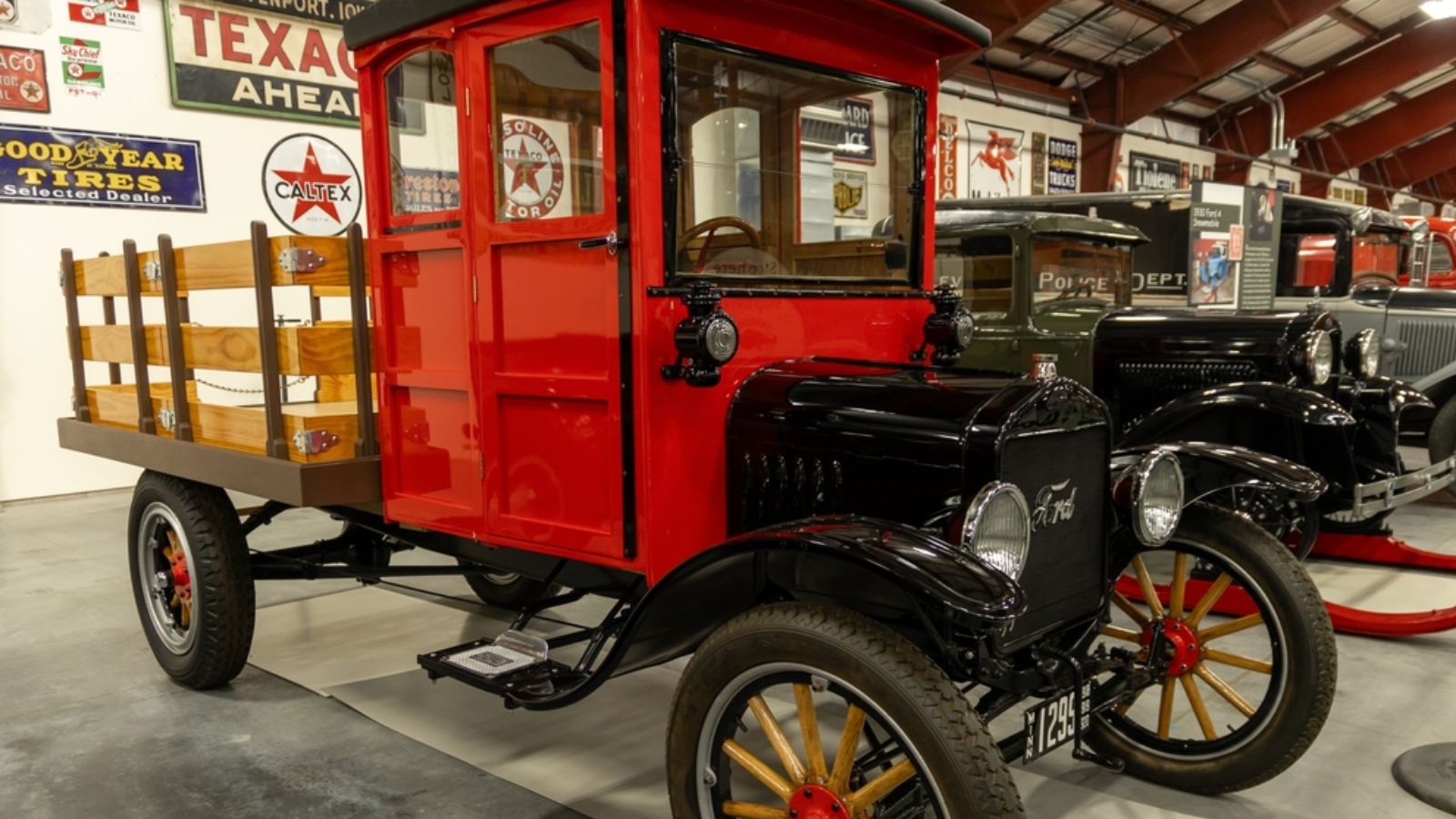Ford trucks have long been a staple of American automotive culture, evolving significantly since their inception. From their early utilitarian designs to today’s robust and tech-savvy models, these vehicles have adapted to meet the changing needs of drivers. The evolution of Ford trucks reflects not only advancements in technology but also shifts in consumer preferences and lifestyle demands.

The Early Years: Birth of Ford Trucks
In the early days of the automotive industry, Ford recognized the need for commercial vehicles. This led to significant innovations and the launch of key models that would shape the future of trucks. Here’s a closer look at the origins of Ford trucks.
The Model TT: Ford’s First Truck
Introduced in 1917, the Ford Model TT was the brand’s first dedicated truck. It showcased a heavy-duty chassis based on the popular Model T. With its 1-ton capacity, the Model TT became essential for businesses and farmers.
The vehicle featured a stronger frame and a rear axle specifically designed for hauling. The simplicity of its design allowed for easy modifications, which made it a favorite among users. Many owners outfitted the truck with custom beds for their specific needs, proving its versatility and practicality.
1930s Advances: Design and Power
By the 1930s, Ford trucks underwent significant design changes and power improvements. This era saw the transition to streamlined shapes, contributing to better aerodynamics. The introduction of the flathead V8 engine in 1932 marked a turning point in the truck’s performance.
These advancements not only enhanced the power output but also improved fuel efficiency. Ford’s trucks became known for their reliability, which appealed to a growing market. The combination of design and engineering innovation paved the way for the future of Ford trucks in the subsequent decades.
Post-War Expansion and the F-Series
After World War II, Ford began to capitalize on America’s growing need for reliable trucks. This era marked the launch of the F-Series, which played a crucial role in redefining what pickup trucks could be.
The First F-Series: Redefining Pickups
Introduced in 1948, the first F-Series represented a significant shift in truck design. This series featured a more modern aesthetic with smooth lines and a bold front grille.
Key models included:
- F-1: The base model, suitable for light-duty tasks.
- F-2 and F-3: Designed for heavier duties, catering to commercial use.
The F-Series trucks were known for their durability and versatility. They swiftly became essential for farmers, construction workers, and businesses alike, establishing a reputation for reliability.
The F-100 Era: Bigger and More Powerful
In 1953, Ford introduced the F-100, providing consumers with a mid-weight option in the F-Series. This model offered improved power and advanced features for its time, including optional V8 engines.
Standout features of the F-100:
- Increased Payload Capacity: It could handle heavier loads, supporting growing economic activities.
- Improved Comfort: The cabin was designed with driver comfort in mind, including better seating.
By 1956, the F-100 had solidified its place in the market, attracting a diverse range of buyers. Its combination of strength and style set a new standard for trucks, influencing future designs and functions in the pickup market.
Modernizing the Fleet: Aerodynamics and Efficiency
The quest for improved aerodynamics and efficiency has transformed Ford trucks. This section covers significant advances, highlighting key innovations that have shaped modern models.
The Aerodynamic Revolution: The 1980s
During the 1980s, Ford began to embrace aerodynamic designs to enhance fuel efficiency. The introduction of the Ford Aerostar and the redesigned F-Series showcased smoother lines and rounded edges.
These changes significantly reduced drag, contributing to better performance and mileage. The use of lighter materials also played a role in this revolution, impacting payload capacities while maintaining strength.
This period marked a pivotal shift towards recognizing the importance of aerodynamics in truck design. The innovations set a foundation for future developments in truck engineering.
Advent of EcoBoost: Embracing Sustainability
The EcoBoost engine technology debuted in the 2011 F-150, marking a landmark in Ford’s efficiency efforts. This turbocharged engine aimed to provide the power of larger V8 engines while improving fuel economy.
Owners can enjoy up to 20% better fuel efficiency compared to traditional engines. The combination of direct injection and turbocharging allows for higher power output without sacrificing sustainability.
Ford’s commitment to reducing environmental impact is evident in this innovation. With each new generation, EcoBoost continues to offer drivers a blend of performance and economical operation, shaping a new standard in the truck market.
Technology and the Future of Ford Trucks
Ford trucks are at the forefront of technological advancement, integrating smart features and pushing towards sustainability with electric models. You’ll find that these innovations enhance your driving experience and contribute to a greener future.
Smart Features and Automation
Modern Ford trucks are equipped with advanced technology that makes driving safer and more convenient. Features like adaptive cruise control, lane-keeping assist, and blind-spot monitoring help you navigate various driving conditions with ease.
The Ford Co-Pilot360 suite offers a range of tools, from automatic emergency braking to rear cross-traffic alerts. These systems work together to provide you with a more secure driving experience.
In addition, infotainment systems like Ford’s SYNC® enhance connectivity, allowing you to integrate your smartphone seamlessly. Stay connected through voice commands and access navigation, music, and more, all while keeping your focus on the road.
Electric Models: Towards a Green Future
Ford is committed to sustainability with a growing lineup of electric trucks. The F-150 Lightning is a prime example, showcasing Ford’s shift towards electric vehicles.
This model offers impressive acceleration, a driving range of up to 300 miles, and features like vehicle-to-load capability, enabling you to power tools or appliances directly from your truck. You can enjoy the benefits of lower maintenance costs and reduced emissions.
Ford’s investment in electric vehicle infrastructure is also significant. They are expanding charging networks and aiming to make electric trucks accessible to everyone. This move not only supports the environment but also positions you to embrace the future of driving.
